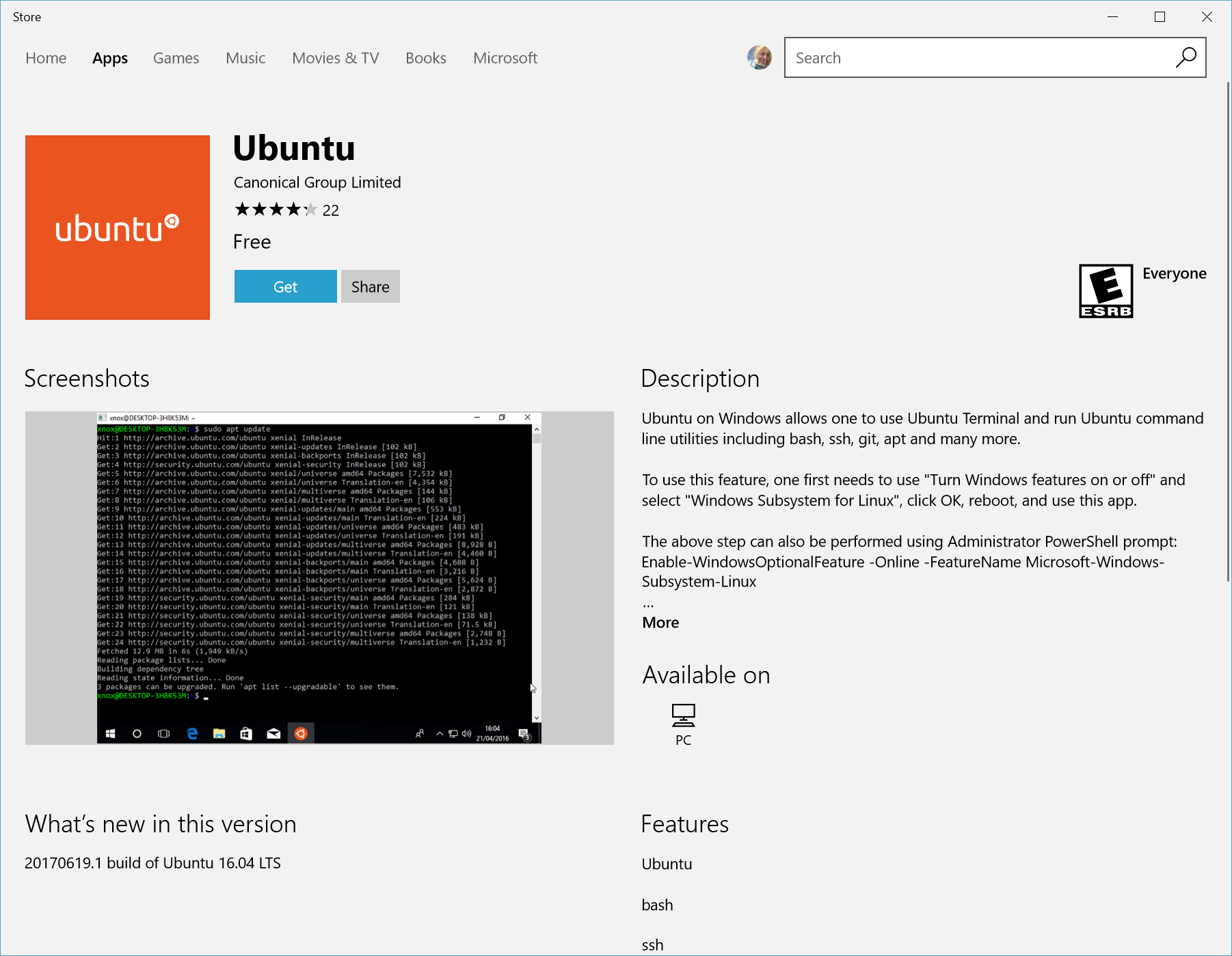- 1. Install the GPU driver
- 2. Unlocking features
- 3. Update MS Linux kernel
- 4. Configure WSL 2
- 5. Configure CUDA WSL-Ubuntu Toolkit
- 6. Install Docker
- 7. Install
cogand pull an image - 8. Run a model in WSL 2
- 9. References
Running cog on Windows is now possible thanks to WSL 2. Follow this guide to enable WSL 2 and GPU passthrough on Windows 11.
Windows 10 is not officially supported, as you need to be on an insider build in order to use GPU passthrough.
Before beginning installation, make sure you have:
- Windows 11.
- NVIDIA GPU.
- RTX 2000/3000 series
- Kesler/Tesla/Volta/Ampere series
- Other configurations are not guaranteed to work.
Per NVIDIA, the first order of business is to install the latest Game Ready drivers for you NVIDIA GPU.
https://www.nvidia.com/download/index.aspx
I have an NVIDIA RTX 2070 Super, so filled out the form as such:
Click "search", and follow the dialogue to download and install the driver.
Restart your computer once the driver has finished installation.
Open Windows Terminal as an administrator.
- Use start to search for "Terminal"
- Right click -> Run as administrator...
Run the following powershell command to enable the Windows Subsystem for Linux and Virtual Machine Platform capabilities.
dism.exe /online /enable-feature /featurename:Microsoft-Windows-Subsystem-Linux /all /norestartIf you see an error about permissions, make sure the terminal you are using is run as an administrator and that you have an account with administrator-level privileges.
dism.exe /online /enable-feature /featurename:VirtualMachinePlatform /all /norestartIf this command fails, make sure to enable virtualization capabilities in your computer's BIOS/UEFI. A successful output will print The operation completed successfully.
Before moving forward, make sure you reboot your computer so that Windows 11 will have WSL2 and virtualization available to it.
Download and run the WSL2 Linux kernel update package for x64 machines msi installer. When prompted for elevated permissions, click 'yes' to approve the installation.
To ensure you are using the correct WSL kernel, open Windows Terminal as an adminstrator and enter:
wsl cat /proc/versionThis will return a complicated string such as:
Linux version 5.10.102.1-microsoft-standard-WSL2 (oe-user@oe-host) (x86_64-msft-linux-gcc (GCC) 9.3.0, GNU ld (GNU Binutils) 2.34.0.20200220) The version we are interested in is Linux version 5.10.102.1. At this point, you should have updated your kernel to be at least Linux version 5.10.43.3.
If you can't get the correct kernel version to show:
Open Settings → Windows Update → Advanced options and ensure Receive updates for other Microsoft products is enabled. Then go to Windows Update again and click Check for updates.
First, configure Windows to use the virtualization-based version of WSL (version 2) by default. In a Windows Terminal with adminstrator priveleges, type the following:
wsl --set-default-version 2Now, you will need to go to the Microsoft Store and Download Ubuntu 18.04
Launch the "Ubuntu" app available in your Start Menu. Linux will require its own user account and password, which you will need to enter now:
By default, a shimmed version of the CUDA tooling is provided by your Windows GPU drivers.
Important: you should never use instructions for installing CUDA-toolkit in a generic linux fashion. in WSL 2, you always want to use the provided CUDA Toolkit using WSL-Ubuntu Package.
First, open a Windows Terminal and enter:
wsl.exeThis should drop you into your running linux VM. Now you can run the following bash commands to install the correct version of cuda-toolkit for WSL-Ubuntu. Note that the version of CUDA used below may not be the version of CUDA your GPU supports.
sudo apt-key del 7fa2af80 # if this line fails, you may remove it.
wget https://developer.download.nvidia.com/compute/cuda/repos/wsl-ubuntu/x86_64/cuda-wsl-ubuntu.pin
sudo mv cuda-wsl-ubuntu.pin /etc/apt/preferences.d/cuda-repository-pin-600
wget https://developer.download.nvidia.com/compute/cuda/11.7.0/local_installers/cuda-repo-wsl-ubuntu-11-7-local_11.7.0-1_amd64.deb
sudo dpkg -i cuda-repo-wsl-ubuntu-11-7-local_11.7.0-1_amd64.deb
sudo apt-get update
sudo apt-get -y install cudaDownload and install Docker Desktop for Windows. It has WSL 2 support built in by default.
Once installed, run Docker Desktop, you can ignore the first-run tutorial. Go to Settings → General and ensure Use the WSL 2 based engine has a checkmark next to it. Click Apply & Restart.
Reboot your computer one more time.
Open Windows Terminal and enter your WSL 2 VM:
wsl.exeDownload and install cog inside the VM:
sudo curl -o /usr/local/bin/cog -L https://github.com/replicate/cog/releases/latest/download/cog_`uname -s`_`uname -m`
sudo chmod +x /usr/local/bin/cogMake sure it's available by typing:
which cog # should output /usr/local/bin/cog
cog --version # should output the cog version number.Finally, make sure it works. Let's try running afiaka87/glid-3-xl locally:
cog predict 'r8.im/afiaka87/glid-3-xl' -i prompt="a fresh avocado floating in the water" -o prediction.jsonWhile your prediction is running, you can use Task Manager to keep an eye on GPU memory consumption:
This model just barely manages to fit under 8 GB of VRAM.
Notice that output is returned as JSON for this model as it has a complex return type. You will want to convert the base64 string in the json array to an image.
jq can help with this:
sudo apt install jqThe following bash uses jq to grab the first element in our prediction array and converts it from a base64 string to a png file.
jq -cs '.[0][0][0]' prediction.json | cut --delimiter "," --field 2 | base64 --ignore-garbage --decode > prediction.pngWhen using WSL 2, you can access Windows binaries with the .exe extension. This lets you open photos easily within linux.
explorer.exe prediction.png- https://docs.nvidia.com/cuda/wsl-user-guide/index.html
- https://developer.nvidia.com/cuda-downloads?target_os=Linux&target_arch=x86_64&Distribution=WSL-Ubuntu&target_version=2.0
- https://www.docker.com/blog/wsl-2-gpu-support-for-docker-desktop-on-nvidia-gpus/
- https://docs.microsoft.com/en-us/windows/wsl/install-manual#step-4---download-the-linux-kernel-update-package
- https://github.com/replicate/cog







